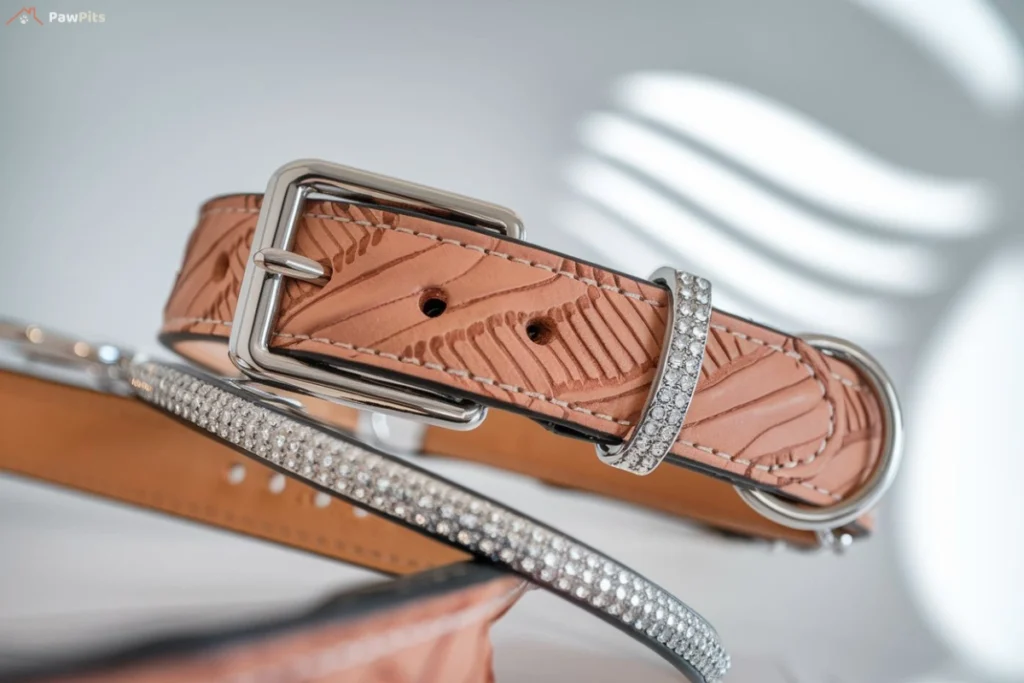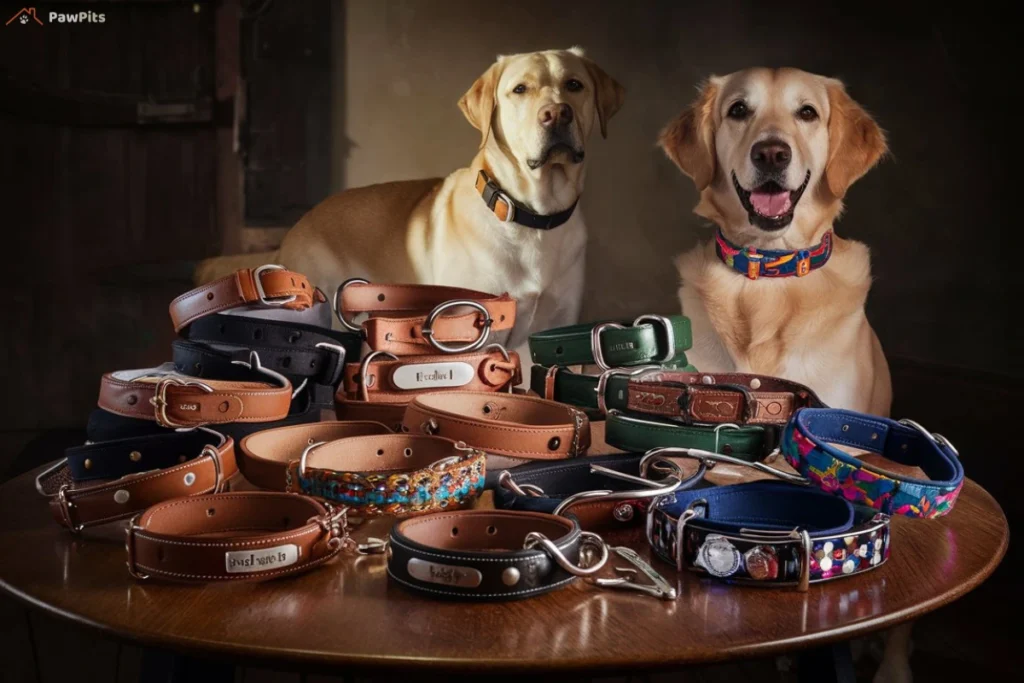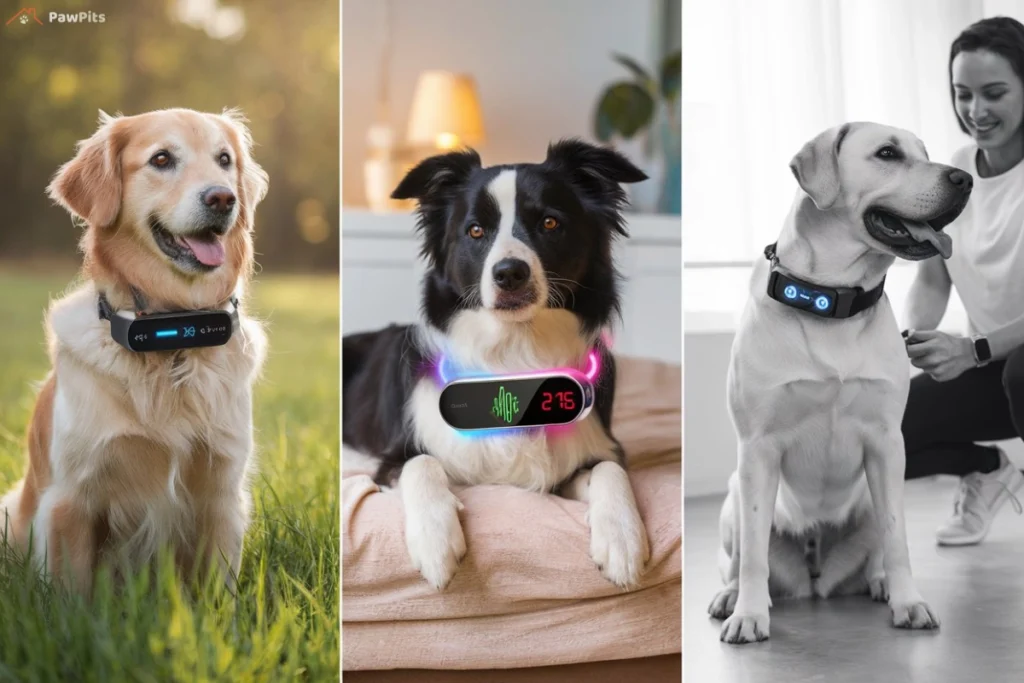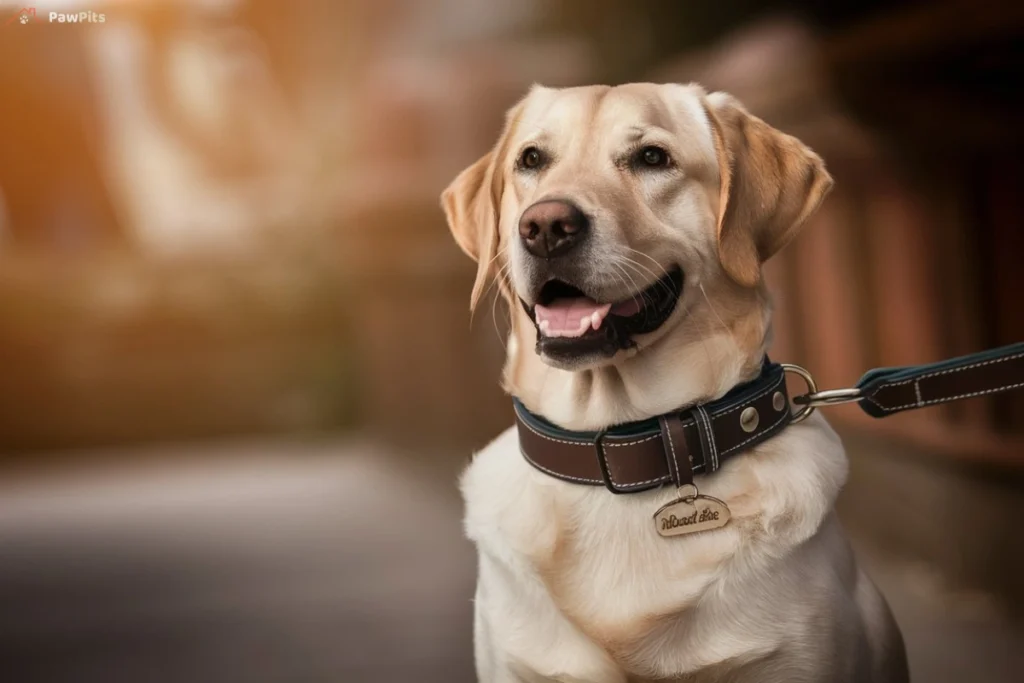Dog collar play a crucial role in your pet’s comfort, safety, and overall well-being. The right collar ensures a secure fit, prevents injuries, and makes daily walks more enjoyable. Many dog owners overlook the importance of quality, settling for collars that cause discomfort or wear out quickly. A poorly chosen collar can lead to skin irritation, restricted breathing, or even escape risks.
Upgrading to a better collar means investing in durability, functionality, and style. Whether it’s a personalized nameplate, a reflective design for night walks, or an advanced GPS collar, modern options provide more than just a way to attach a leash. Choosing the best collar for your dog improves their quality of life while giving you peace of mind.
1. Comfort and Safety Should Come First

Importance of Proper Fit
A well-fitted dog collar is essential for your pet’s safety, comfort, and overall well-being. A collar that is too tight can cause discomfort, breathing difficulties, and even skin irritation. On the other hand, a loose collar increases the risk of your dog slipping out and getting lost or injured. Finding the right balance ensures that your dog remains secure without experiencing unnecessary pressure around the neck.
How to Measure for the Perfect Fit
To determine the ideal collar size, use a flexible measuring tape and wrap it around your dog’s neck where the collar will sit. The general rule is to allow two fingers to fit comfortably between the collar and your dog’s neck. This provides a snug fit without being too restrictive. For smaller breeds, a slightly looser fit may be necessary, while larger breeds may need a bit more adjustability for growth and movement.
Signs of an Ill-Fitting Collar
If your dog shows signs of discomfort, constantly scratches at the collar, or has visible marks on the skin, the collar may be too tight. A loose collar may slide over your dog’s head easily, leading to potential escape risks. Regularly checking the fit, especially for growing puppies, helps prevent these issues.
Adjustable vs. Fixed-Size Collars
Adjustable collars offer more flexibility and accommodate weight changes, making them ideal for growing dogs or seasonal coat changes. Fixed-size collars may work for adult dogs with stable weight and fur length but require precise measurement before purchase. Choosing an adjustable option ensures a better fit over time.
A properly fitted collar not only keeps your dog safe but also enhances their comfort during walks, playtime, and daily activities. Checking and adjusting the fit regularly helps maintain your dog’s safety and happiness.
Material Matters
The material of a dog collar plays a crucial role in durability, comfort, and functionality. Different materials offer varying levels of strength, flexibility, and resistance to wear and tear. Choosing the right material ensures that your dog stays comfortable while also matching their lifestyle and activity level.
Leather Collars: Classic and Durable
Leather collars are a popular choice for dog owners who want a combination of durability and style. High-quality leather softens over time, molding to the dog’s neck for a comfortable fit. It is less likely to cause irritation and can last for years with proper care. However, leather requires regular conditioning to prevent cracking, and it may not be the best option for dogs that love swimming, as excessive moisture can damage the material.
Nylon Collars: Lightweight and Versatile
Nylon collars are lightweight, flexible, and available in a wide range of colors and designs. They are ideal for everyday use and are often more affordable than leather. Many nylon collars come with reflective stitching for better visibility during nighttime walks. However, nylon can fray over time and may not be as durable for strong pullers or highly active dogs.
Biothane Collars: Waterproof and Easy to Clean
Biothane collars offer a great alternative to both leather and nylon. Made from a coated polyester material, biothane is waterproof, odor-resistant, and easy to clean. These collars are perfect for dogs that spend a lot of time outdoors, especially in wet or muddy conditions. They maintain flexibility in different weather conditions and require minimal maintenance compared to leather.
Metal and Chain Collars: When to Use with Caution
Some metal collars, such as choke chains and prong collars, are used for training purposes. While they can be effective in certain situations, they should only be used under the guidance of a professional trainer. Misuse can cause injury, discomfort, or even behavioral issues. Stainless steel chain collars can be durable, but they are not ideal for everyday wear.
Choosing the right collar material depends on your dog’s lifestyle, activity level, and personal preference. Leather offers durability and style, nylon provides affordability and variety, and biothane is perfect for all weather conditions. Regularly checking for wear and replacing old collars ensures that your dog remains safe and comfortable.
No-Pull and Martingale Collars
Not all dogs walk politely on a leash, and some breeds are more prone to pulling or slipping out of traditional collars. No-pull and martingale collars offer safer alternatives to standard flat collars, providing better control while ensuring comfort for your dog.
Reducing Strain and Improving Walks
No-pull collars are designed to discourage dogs from pulling during walks. Unlike traditional collars that apply pressure to the neck when a dog pulls, no-pull designs distribute pressure more evenly, reducing strain on the throat and preventing potential injuries.
Types of No-Pull Collars:
- Front-Clip Harnesses with Martingale Features – These combine a chest attachment point with a gentle tightening effect, steering the dog back toward the owner when they pull.
- Head Collars (e.g., Gentle Leader, Halti) – These function similarly to a horse’s halter, guiding the dog’s head to reduce pulling without causing discomfort.
- Limited-Slip Collars – Some no-pull collars have a slight tightening mechanism that discourages pulling without choking the dog.
No-pull collars are ideal for energetic dogs, large breeds, and those still learning leash manners. However, proper introduction and positive reinforcement help ensure the dog adjusts comfortably to wearing them.
Martingale Collars: A Safe Option for Escape Artists
Martingale collars, also known as limited-slip collars, were originally designed for sighthounds like Greyhounds and Whippets, which have narrow heads and can easily slip out of standard collars. These collars tighten slightly when a dog pulls or tries to back out, preventing escape without choking or causing discomfort.
Benefits of Martingale Collars:
- Better Control – Helps manage strong pullers without excessive pressure on the neck.
- Prevents Escaping – Ideal for breeds with slender necks or dogs that frequently slip out of collars.
- Comfortable and Secure Fit – Tightens just enough to prevent slipping but remains loose when not in use.
Martingale collars are commonly made from nylon or a combination of fabric and metal loops. They work best for leash-trained dogs and should be used under supervision rather than as an everyday collar.
Choosing between a no-pull collar and a martingale depends on your dog’s behavior and training needs. No-pull collars help reduce pulling for better leash manners, while martingale collars provide a secure fit for dogs prone to escaping. Both options offer a safer and more effective alternative to traditional collars when used correctly.
2. Durability and Longevity of Quality Collars

Why Cheap Collars Don’t Last
Many dog owners opt for inexpensive collars, assuming they all serve the same purpose. However, cheap collars often sacrifice quality, durability, and safety. Low-cost materials, weak stitching, and poor hardware can lead to premature wear, putting your dog at risk.
Common Issues with Cheap Dog Collars
- Weak Materials – Low-quality nylon or faux leather may fray, crack, or become brittle over time.
- Poor Stitching and Construction – Loose threads and weak seams can cause collars to fall apart quickly, especially for active dogs.
- Unreliable Buckles and D-Rings – Cheap plastic buckles may snap under pressure, and flimsy metal rings can bend or break, increasing the risk of a lost dog.
- Discomfort and Irritation – Some inexpensive collars use rough or stiff materials that can cause skin irritation, hair loss, or chafing.
The Hidden Costs of Cheap Collars
A poorly made dog collar may seem like a bargain at first, but frequent replacements quickly add up. More importantly, a weak collar can fail at the worst moment, putting your dog in danger. Investing in a well-made collar ensures better safety, comfort, and longevity.
Waterproof and Weather-Resistant Dog Collar Options
Dogs that love outdoor adventures need collars that can withstand rain, mud, and rough conditions. Waterproof and weather-resistant collars are designed to handle exposure to water, dirt, and extreme temperatures without losing their durability or comfort.
Best Materials for Waterproof and Weather-Resistant Collars
- Biothane – A synthetic material that mimics the look and feel of leather while being fully waterproof, odor-resistant, and easy to clean.
- Coated Nylon – Nylon collars with a waterproof coating provide flexibility and strength while repelling moisture.
- Silicone or Rubber-Based Collars – These materials resist water and dirt while remaining soft and flexible.
Benefits of Waterproof Dog Collars
- Odor and Mold Resistance – Prevents the buildup of bacteria, keeping the collar fresh even after exposure to water.
- Easy Maintenance – A quick rinse or wipe is enough to clean waterproof collars, making them ideal for active dogs.
- Durability in Harsh Conditions – Weather-resistant collars remain strong in hot, cold, or wet environments, ensuring long-lasting performance.
For dogs that swim, hike, or play in the rain, a waterproof dog collar provides comfort, durability, and convenience. Choosing the right material ensures your dog’s collar stays in top condition, no matter the weather.
Top Brands for Long-Lasting Dog Collar
Quality dog collars come from brands that prioritize durability, comfort, and safety. Investing in a reputable brand ensures that your dog’s collar lasts longer while providing the best fit and protection.
Best Durable Dog Collar Brands
- Ruffwear – Known for its adventure-ready collars made from high-quality webbing, reflective stitching, and strong hardware.
- Lupine – Offers lifetime-guaranteed nylon collars with break-resistant buckles and a variety of patterns.
- PetSafe – Specializes in adjustable collars, training collars, and waterproof options designed for long-term use.
- Orvis – Features handcrafted leather and durable nylon collars with reinforced stitching for extra strength.
- Kurgo – Produces rugged collars with strong metal buckles, designed for active and outdoor-loving dogs.
What to Look for in a Long-Lasting Dog Collar
- Reinforced Stitching and Strong Webbing – Ensures resistance to wear and tear.
- High-Quality Metal or Heavy-Duty Plastic Buckles – Prevents breakage under stress.
- Adjustability for a Secure Fit – Allows for comfort and a better long-term fit as dogs grow or change weight.
A high-quality dog collar lasts longer, provides better security, and keeps your dog comfortable. Choosing a trusted brand ensures you get a collar that meets your dog’s needs without frequent replacements.
3. Dog Collar Style and Personalization Options
Personalized Nameplates and Tags
Adding a personalized nameplate or tag to a dog collar is a simple yet effective way to enhance both style and safety. A custom-engraved nameplate eliminates the need for dangling tags, which can be noisy or even get caught on objects. It also ensures that your dog’s name and contact information are always visible, making it easier for someone to return your pet if they ever get lost. Nameplates come in a variety of materials, including stainless steel, brass, and aluminum, each offering different levels of durability and aesthetic appeal. Many pet owners also choose decorative tags with fun shapes, colors, or engravings that reflect their dog’s personality.
Trendy and Fashionable Dog Collar Designs
A high-quality collar is not just about durability and comfort; it can also be a stylish accessory. Many brands offer fashionable collars with vibrant patterns, designer fabrics, and premium finishes. Whether you prefer a sleek leather collar for a sophisticated look or a bright, patterned nylon collar for a playful touch, there are countless options to match your dog’s personality. Seasonal designs, such as holiday-themed collars, allow pet owners to keep their dog’s look fresh throughout the year. Additionally, customizable options, like interchangeable bow ties or decorative charms, make it easy to switch up the style without having to buy multiple collars.
LED and Reflective Collars
Visibility is an essential part of keeping your dog safe, especially during early morning or late evening walks. LED and reflective collars are designed to improve visibility in low-light conditions, reducing the risk of accidents. Reflective collars use special materials that catch and reflect light from car headlights or street lamps, making your dog easier to spot. LED collars take it a step further by providing built-in illumination, often with different lighting modes such as steady glow, slow flash, or rapid flash. These collars are rechargeable or battery-operated, offering convenience while enhancing your dog’s safety during nighttime adventures. Some models even combine both reflective strips and LED lights for maximum visibility.
4. Advanced Features for Modern Dog Owners

GPS Dog Collar
A GPS dog collar is an essential tool for pet owners who want to ensure their dog’s safety and always know their location. These collars use satellite tracking technology to provide real-time location updates, making them especially useful for dogs that tend to wander or escape. Many models connect to a smartphone app, allowing owners to set up virtual boundaries, known as geofences. If the dog moves beyond the designated area, the owner receives an instant alert.
Some advanced GPS collars also include activity tracking, showing how much exercise the dog is getting each day. This feature helps owners monitor their pet’s health and adjust their routine if needed. While GPS collars are popular among dog owners who live in large open spaces or rural areas, they are also beneficial in urban settings where a lost dog can quickly become overwhelmed by traffic and noise.
Battery life and connectivity are important considerations when choosing a GPS collar. Some models rely on cellular networks, which means they may require a subscription plan, while others use radio frequency or Bluetooth for tracking within a limited range. High-end GPS collars often include waterproofing and durable materials, ensuring they withstand rough outdoor adventures.
Smart Collars with Health Monitoring
Technology has transformed pet care, and smart collars with health monitoring are a great example of this innovation. These collars go beyond basic tracking by monitoring a dog’s activity levels, heart rate, sleep patterns, and even stress levels. Some models can detect unusual behavior, such as excessive scratching or changes in movement, which may indicate underlying health issues.
Smart collars help dog owners take a proactive approach to their pet’s well-being. For example, if a dog is not getting enough exercise, the collar can send reminders or suggest activity goals based on their breed and age. Some devices even sync with veterinary apps, allowing owners to share health data with their vet during check-ups.
For senior dogs or breeds prone to health problems, these collars provide an extra layer of reassurance. Early detection of issues such as arthritis, anxiety, or heart conditions can lead to quicker treatment and a better quality of life. Many smart collars also feature built-in GPS and geofencing, combining safety and health tracking in one device.
Training and Anti-Bark Collars
Training and anti-bark collars are designed to help correct unwanted behaviors in a safe and controlled manner. These collars use various training methods, including vibration, sound, or mild static stimulation, to discourage excessive barking, pulling, or other behavioral issues.
Anti-bark collars are particularly useful for dogs that bark excessively due to anxiety, territorial instincts, or attention-seeking behavior. Many modern collars are adjustable, allowing owners to customize the intensity level based on their dog’s sensitivity. Some models include a progressive correction system, which starts with a gentle vibration or sound before increasing to a stronger stimulus if the barking continues.
Training collars can also be effective tools for off-leash training, helping dogs learn to recall commands or reinforcing positive behavior. Remote-controlled models allow owners to correct behaviors in real-time, making them a great option for professional training sessions. However, responsible use is key these collars should never be used as a substitute for proper training and should always be paired with positive reinforcement techniques.
5. Making the Right Choice for Your Dog Collar

Matching the Collar to Your Dog’s Breed and Size
Choosing the right collar goes beyond aesthetics it needs to be a perfect fit for your dog’s breed and size to ensure comfort and safety. Different breeds have unique needs, and selecting the right collar requires considering factors like neck size, fur type, and activity level.
For small breeds like Chihuahuas or Dachshunds, lightweight collars made of soft nylon or leather are ideal to prevent strain on their delicate necks. Adjustable collars with quick-release buckles are also useful, as they allow for a secure fit without being too tight.
Medium-sized dogs, such as Cocker Spaniels or Beagles, require durable collars that can withstand moderate activity levels. A well-padded collar helps prevent chafing, especially for breeds with sensitive skin.
Large breeds like German Shepherds, Labradors, or Huskies need sturdy, wide collars that distribute pressure evenly. Heavy-duty materials such as thick leather or reinforced nylon provide durability and control. For extra-strong pullers, a martingale collar or no-pull harness is often a better option.
For breeds with unique needs such as Greyhounds and Whippets, which have slender necks—specialized collars like wide martingale designs provide comfort and prevent slipping. Meanwhile, long-haired breeds like Golden Retrievers or Collies may benefit from rolled leather collars to reduce tangling and matting.
Matching the collar to your dog’s breed and size ensures that it not only looks good but also functions well for their daily activities, whether they are lounging at home or exploring the outdoors.
Eco-Friendly and Sustainable Options
As more pet owners become conscious of their environmental impact, eco-friendly and sustainable dog collars are gaining popularity. These collars are made from ethically sourced materials that reduce waste while maintaining durability and comfort.
One popular option is collars made from recycled materials, such as repurposed plastic bottles or upcycled fabric. These provide the same strength as traditional collars while helping to reduce plastic pollution. Bamboo fiber is another sustainable alternative, known for being lightweight, hypoallergenic, and biodegradable.
For pet owners looking for long-lasting durability, vegetable-tanned leather collars offer an eco-friendly choice. Unlike conventional leather, which is often treated with harmful chemicals, vegetable tanning uses natural plant-based dyes, making it a safer and more sustainable option.
Some brands also emphasize fair-trade and cruelty-free practices, ensuring that their products are made ethically. Companies that use sustainable packaging and carbon-neutral shipping further contribute to reducing the environmental impact.
By choosing an eco-friendly collar, dog owners can provide their pets with a stylish and durable accessory while supporting sustainable practices that benefit the planet.
Final Tips on Finding the Best Dog Collar
Selecting the best dog collar requires considering multiple factors, including comfort, durability, safety, and style. Before making a purchase, measuring your dog’s neck size accurately is essential. A collar should fit snugly but not too tightly allowing two fingers to fit between the collar and your dog’s neck is a good rule of thumb.
Material choice is also important. Leather offers classic style and longevity, while nylon provides affordability and flexibility. Waterproof collars are great for active dogs that love swimming or exploring in wet conditions. If visibility is a concern, choosing a reflective or LED collar adds an extra layer of safety.
Additionally, consider your dog’s lifestyle and training needs. If your pet pulls on the leash, a martingale or no-pull collar may be a better choice. For dogs that roam or have a tendency to escape, a GPS collar provides added security.
Regularly checking the collar for signs of wear and tear ensures your dog remains comfortable and safe. A high-quality collar is an investment, so prioritizing well-made materials and reliable brands can save money in the long run.
Ultimately, finding the right collar means balancing function and style while keeping your dog’s comfort and safety at the forefront. By carefully selecting the best option, pet owners can ensure their furry companion stays happy and secure.
Check out for more ideas
Conclusion
Choosing the right dog collar is more than just a style decision it directly impacts your pet’s comfort, safety, and well-being. A high-quality collar provides a secure fit, durable materials, and advanced features that make daily walks and training sessions more enjoyable. Whether you are looking for a comfortable everyday collar, a high-tech GPS tracker, or an eco-friendly option, upgrading to a better collar ensures your dog gets the best care possible.
Now is the perfect time to assess your dog’s current collar. Does it fit well? Is it showing signs of wear and tear? Would a different material or feature better suit your dog’s needs? By taking the time to choose a collar that matches your pet’s lifestyle, you are making an investment in their happiness and safety.
Have you recently upgraded your dog’s collar? Share your experience in the comments or let us know which features matter most to you. If you are still searching for the perfect collar, check out our recommended options to find the best fit for your furry friend.

